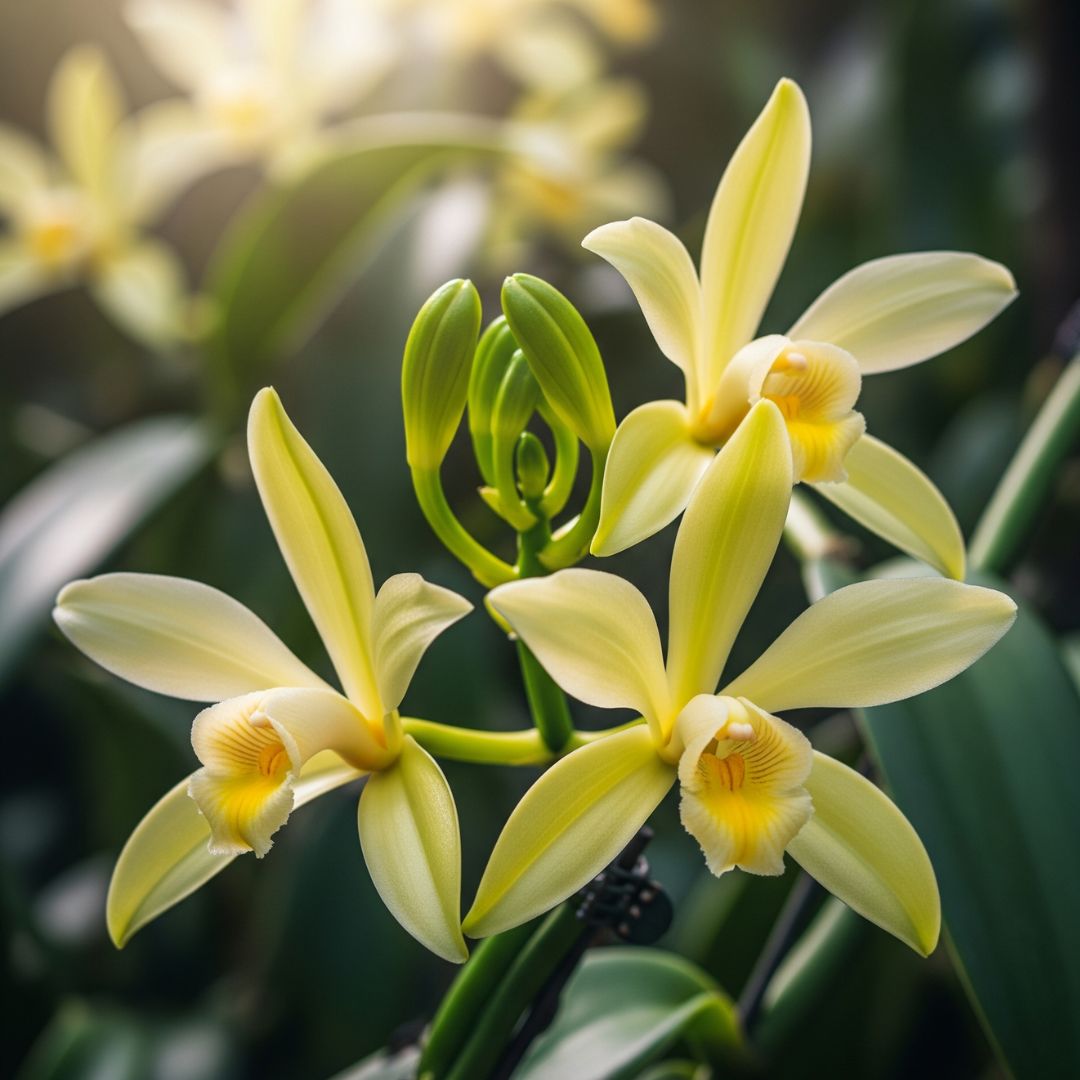
How to Choose Between Bourbon, Tahitian & Ugandan Vanilla Beans: The Ultimate Guide with 7 Key Insights
Share
Vanilla isn’t just vanilla. Behind every pod lies a fascinating story of geography, cultivation, and flavor complexity. Choosing between Bourbon, Tahitian, and Ugandan vanilla beans can transform your culinary or commercial creations. Each variety offers its own signature taste, aroma, and application, making it essential to know which one fits your needs best.
In this article, we’ll break down the differences, explore unique characteristics, and help you make an informed choice whether you’re a home baker, a gourmet chef, or a business sourcing high-quality vanilla.
What Are Vanilla Beans?
Origins and Cultivation
Vanilla beans are the cured seed pods of orchids belonging to the genus Vanilla. While native to Mexico, they’re now grown in tropical climates around the world. The plant requires meticulous hand pollination and months of curing, making vanilla one of the most labor-intensive—and valuable—spices globally.
Processing and Curing Methods
After pollination, vanilla beans undergo a curing process that lasts several months. This involves blanching, sweating, drying, and conditioning. The method used greatly affects the final aroma, flavor depth, and oil content. For instance, Bourbon-style curing emphasizes rich, bold notes, while Tahitian curing enhances delicate floral undertones.
Bourbon Vanilla Beans
Flavor Profile
Bourbon vanilla—named after the former Île Bourbon (now Réunion Island)—is not associated with bourbon whiskey. Instead, it’s known for its creamy, sweet, and bold flavor with chocolatey undertones.
Culinary Uses
-
Ideal for baking: cakes, cookies, pastries
-
Excellent in custards, ice cream, and creams
-
Works well in savory sauces and marinades
Regions of Production
The majority of Bourbon vanilla comes from Madagascar, but it’s also grown in Réunion, Comoros, and Seychelles. Madagascar Bourbon beans are the most widely recognized and used globally.
Tahitian Vanilla Beans
Unique Characteristics
Tahitian vanilla beans are shorter, plumper, and have a higher oil and water content compared to Bourbon beans. Their flavor leans toward floral, fruity, and slightly cherry-like notes, making them stand out.
Best Uses in Food & Beverages
-
Perfect for light desserts such as custards, mousses, and fruit-based dishes
-
Popular in perfumes and high-end confections
-
Adds a delicate complexity to beverages and cocktails
Growing Regions
Primarily cultivated in French Polynesia (Tahiti), with smaller-scale production in Papua New Guinea.
Ugandan Vanilla Beans
Distinct Flavor Traits
Ugandan vanilla is rich in vanillin content, often higher than Bourbon or Tahitian beans. Its flavor is bold, earthy, with hints of chocolate and raisins, making it a powerhouse ingredient.
Ideal Applications
-
Excellent for rich baked goods like brownies and chocolate cakes
-
Adds depth to beverages such as coffee and hot chocolate
-
A favorite for vanilla extract production due to its high vanillin levels
Production and Harvesting
Uganda has become a rising star in the vanilla industry. Its equatorial climate allows two harvests per year, providing a consistent and high-quality supply.
Comparing Bourbon, Tahitian & Ugandan Vanilla
Flavor Differences
-
Bourbon: Creamy, bold, chocolatey
-
Tahitian: Floral, fruity, delicate
-
Ugandan: Earthy, deep, raisin-like
Price Comparison
Tahitian vanilla is generally the most expensive due to limited production. Bourbon vanilla falls in the mid-range, while Ugandan beans are competitively priced yet highly potent.
Shelf Life & Storage
All three varieties last 12–18 months when stored properly in airtight containers away from heat and light. Ugandan beans, due to their higher oil content, tend to remain supple longer.
How to Select the Right Vanilla for Your Needs
For Baking
Choose Bourbon vanilla if you want a strong, classic vanilla flavor that holds up well in high-heat recipes.
For Desserts & Beverages
Opt for Tahitian vanilla if you want elegance, fruitiness, and delicate aromatic notes.
For Perfumes & Extracts
Select Ugandan vanilla for rich, long-lasting fragrance and superior extract quality.
Buying Tips for Quality Vanilla Beans
Appearance & Aroma
-
Look for dark, glossy, pliable pods
-
Avoid beans that are dry, cracked, or brittle
-
Strong, pleasant aroma is a sign of freshness
Ethical & Sustainable Sourcing
Choose suppliers who support fair trade practices and sustainable farming. Reliable sources like Vanilla Trade Alliance ensure farmers receive fair compensation while maintaining high quality.
Frequently Asked Questions (FAQs)
1. Which vanilla is best for ice cream?
Bourbon vanilla is preferred for ice cream due to its creamy and sweet profile.
2. Is Tahitian vanilla stronger than Bourbon?
Not stronger, but more delicate—its floral notes shine in light desserts rather than baked goods.
3. Why is Ugandan vanilla gaining popularity?
Its high vanillin content and consistent harvests make it ideal for both home and commercial use.
4. Can I substitute one vanilla for another?
Yes, but expect slight flavor differences. Bourbon for robustness, Tahitian for delicacy, and Ugandan for richness.
5. How do I store vanilla beans properly?
Store them in an airtight glass jar, away from heat and direct light. Avoid refrigeration, which can cause mold.
6. Why are vanilla beans so expensive?
Vanilla is labor-intensive to grow and cure, requiring hand pollination and months of processing.
Conclusion: Picking Your Perfect Vanilla Bean
The choice between Bourbon, Tahitian, and Ugandan vanilla beans depends on your desired flavor, application, and budget. For traditional baking, bourbon is your best bet. For elegance and delicacy, Tahitian shines. For bold, extract-worthy richness, Ugandan beans stand out.
Whichever you choose, sourcing quality beans from ethical suppliers ensures not only a superior product but also supports sustainable farming communities.



